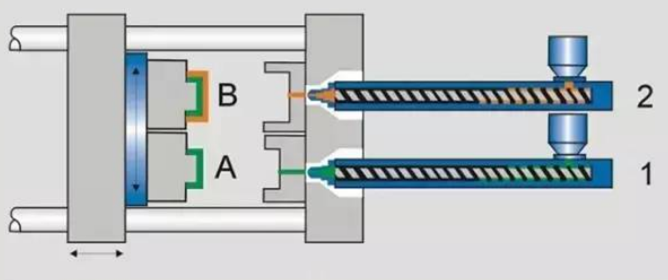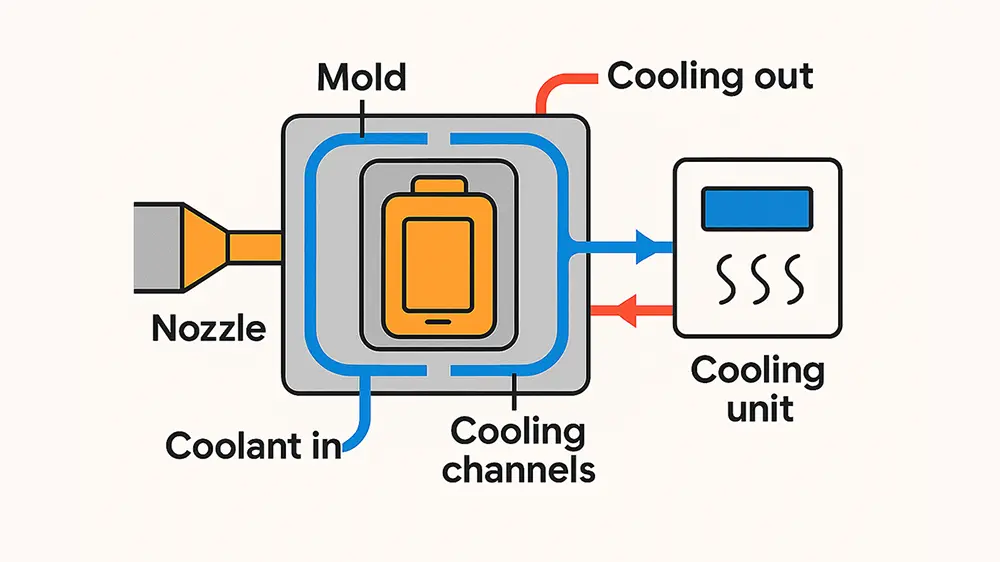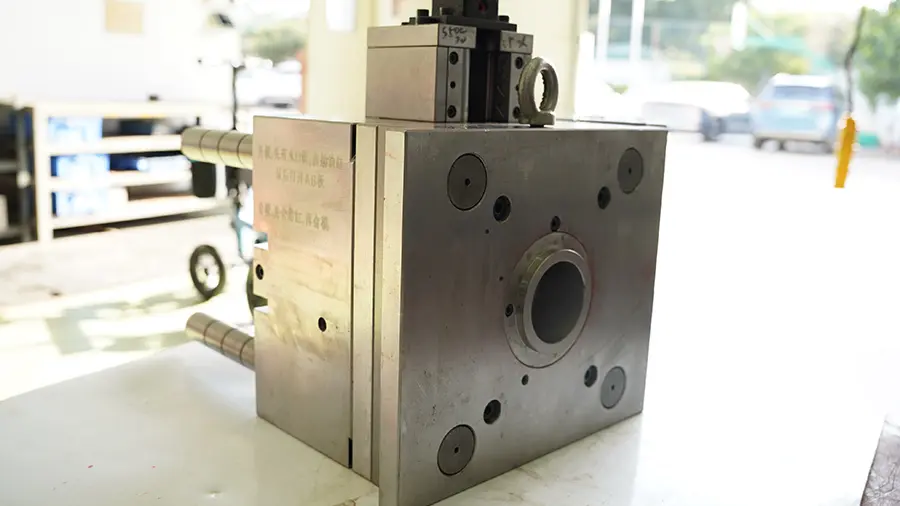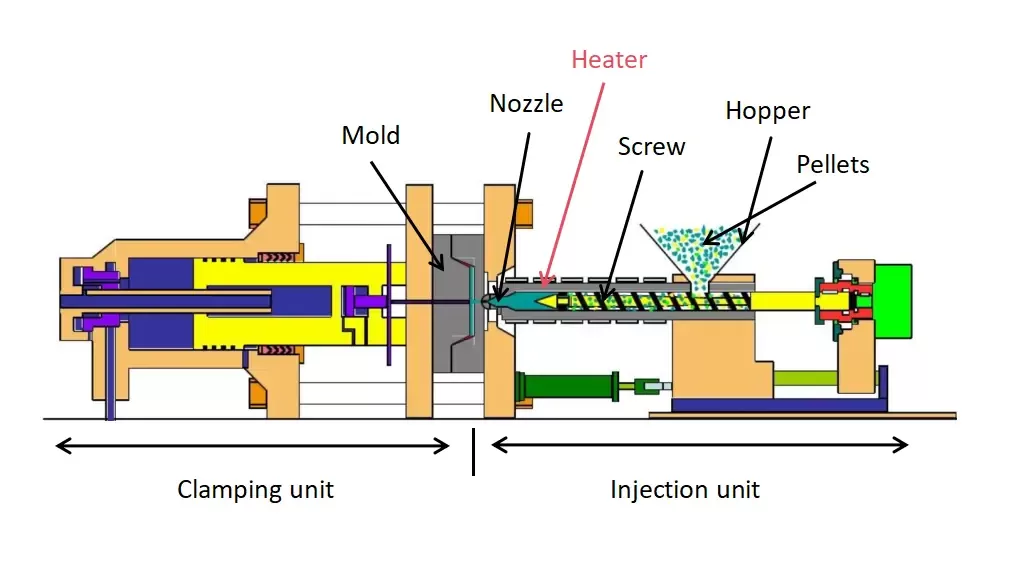Bi-color injection is based on IMD technology. It is a combination of two colors injected onto an object, usually with black and white as the background. Generalized double color injection molding including the over-molding, done through ordinary twice injection molding machines. A narrow sense of two-color injection molding refers to the use of a two-color injection molding machine, mostly rotary type, which is two different types of plastic injection molding parts in the same machine. The former has low requirements for equipment but low production efficiency and is suitable for the molding of soft and hard adhesive materials with low requirements. The latter applies the scope to be widespread, offering good product quality, high production efficiency, and present tendency.

What’re the characteristics of Bicolor injection technology?
- The Bi-color injection molding machine is composed of two plasticizing injection devices with exactly the same structure and specifications. The nozzle should have a special structure according to the need of production mode, or it should be equipped with two compositional molds with exactly the same rotating and transposing structure. Plasticizing injection requires that the two sets of plasticizing injection devices should have the same technical parameters such as melt temperature, injection pressure, and injection melt volume to minimize the fluctuation of technological parameters in the two sets of devices.
- Compared with the ordinary injection molding plastic products, the Bi-color injection molding plastic products should adopt higher parameter values in the injection temperature and injection pressure. The main reason is that the mold runner is longer, the structure is more complex and the flow resistance of injection melt is larger.
- Bi-color injection molding plastic products should be made of materials with good thermal stability and low melt viscosity, so as to avoid decomposition due to the high temperature of the melt staying in the flow passage for a long time. The most widely used plastics are polyolefin resins, polystyrene, and ABS materials.
Bi-color plastic products in the injection molding, in order to make two different colors of molten material in the molding process, can be very good in the mold fusion, to ensure the molding quality of plastic products, the engineer should be used higher melting temperature, mold temperature, injection pressure, and injection rate.
Bi-color mold structure
Traditional Bi-color injection mold has “punch translation” and “punch rotation” two types.
- The “punch translation” mold has two dies and a punch. When the first barrel is injected with glue, the punch is closed with the first punch. Complete the injection of the first type of plastic. After the first plastic solidifies, the concave and punch are separated, and the semi-finished product formed by the first plastic stays in the punch and moves with the punch to the position aligned with the second punch. After the injection molding machine is closed, the second cylinder is used for the injection of the second plastic. After the second plastic solidifies, the injection molding machine opens the mold and takes out the complete product.
“punch rotation” Bi-color molding has two dies and a punch composed of two back to back. This punch can be rotated, equipped with two sides of the injection molding machine has two cylinders, the second cylinder is best designed in the direction of the injection molding machine movement in the vertical direction. You can inject two different kinds of plastic at the same time. After the two types of plastic are solidified, the injection molding machine opens and automatically ejects the complete product. After removing the product, the “rotatable punch” turns 180 degrees. The injection molding machine closes for the next cycle. Since the first and second cartridges of the “punch translation” mode are injected alternately, the first and second cartridges of the “punch rotation” mode are injected simultaneously. So it is twice as efficient to produce the same product in “punch rotation” as in “punch translation” mold.





